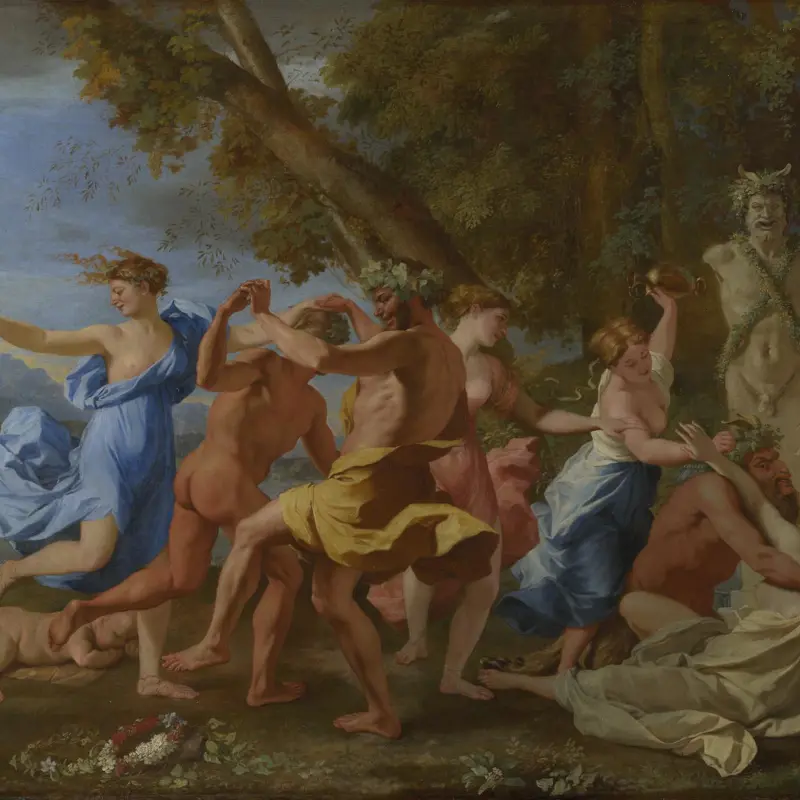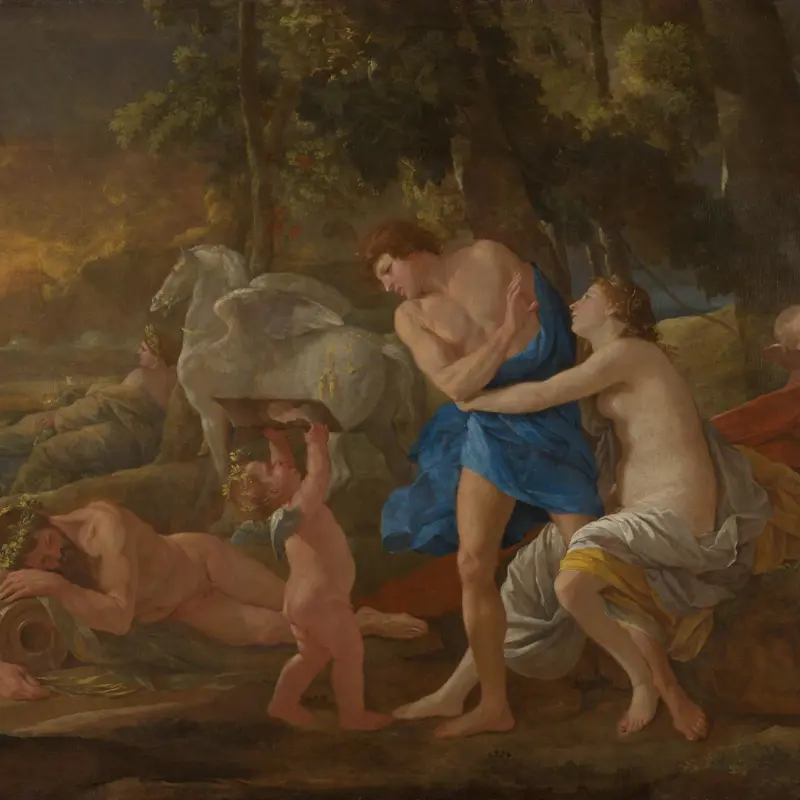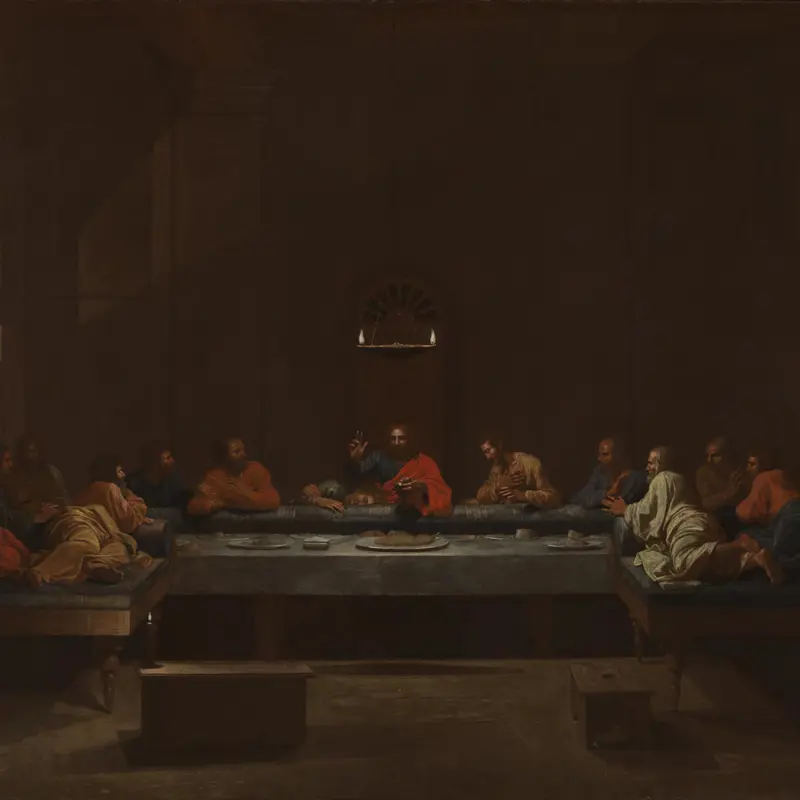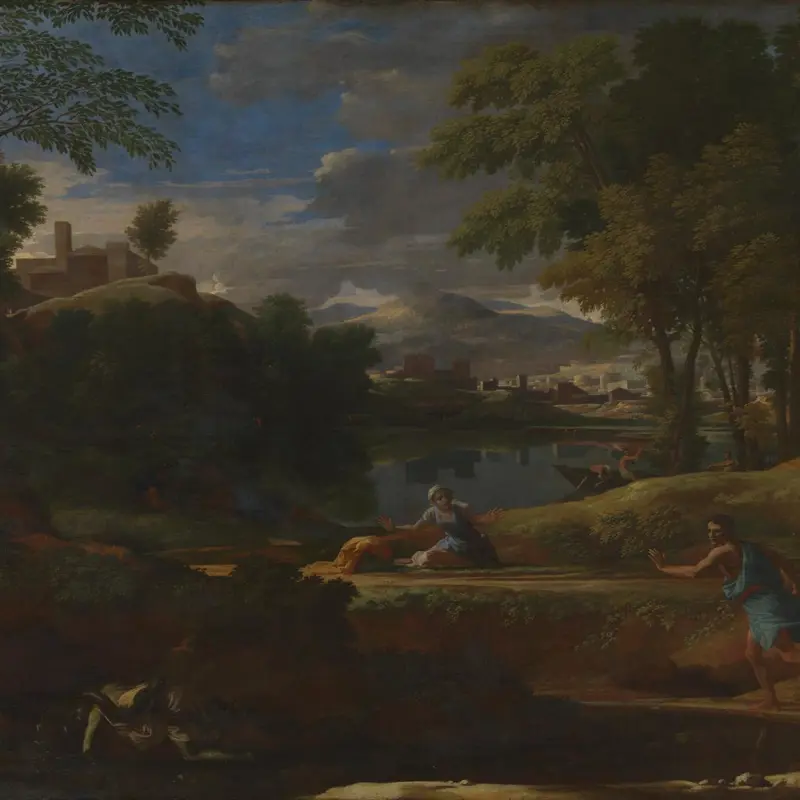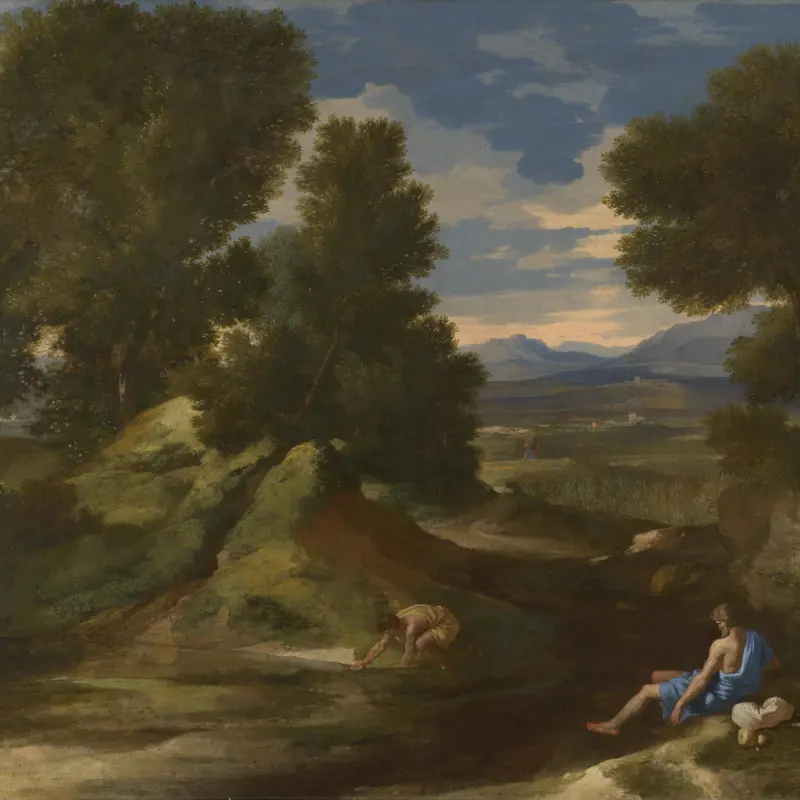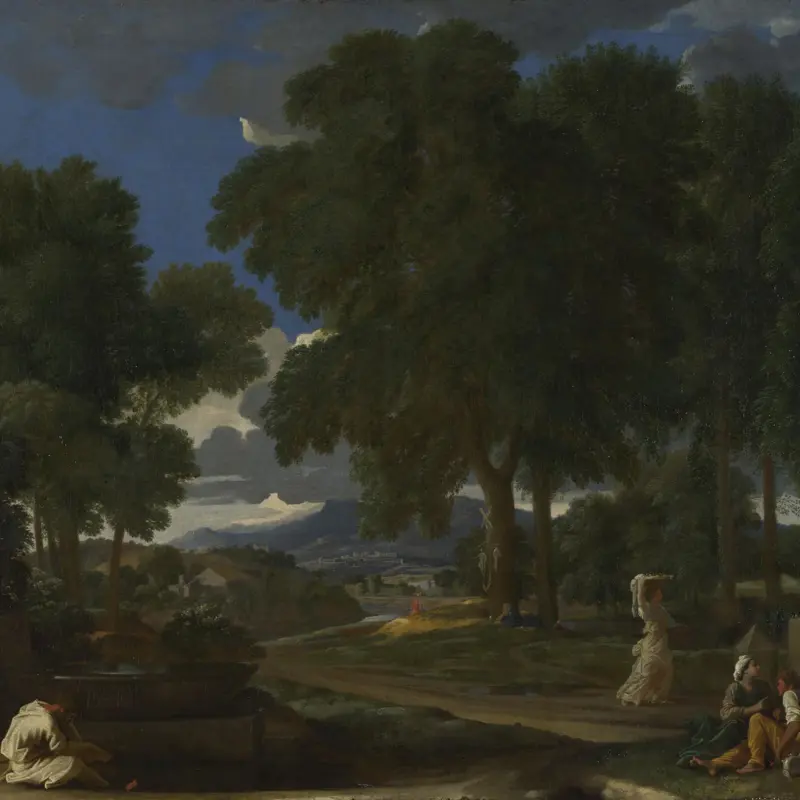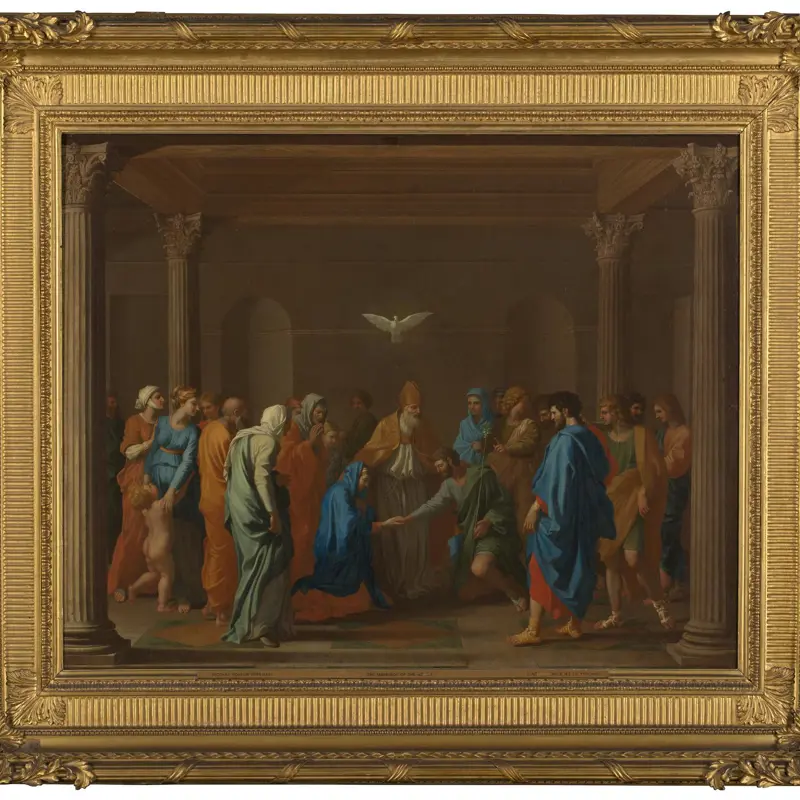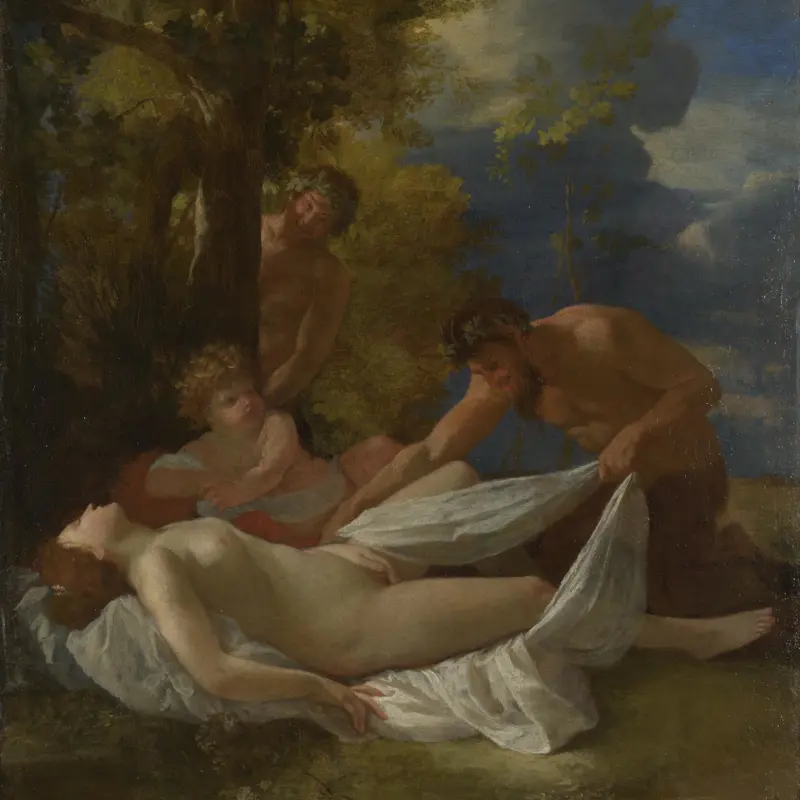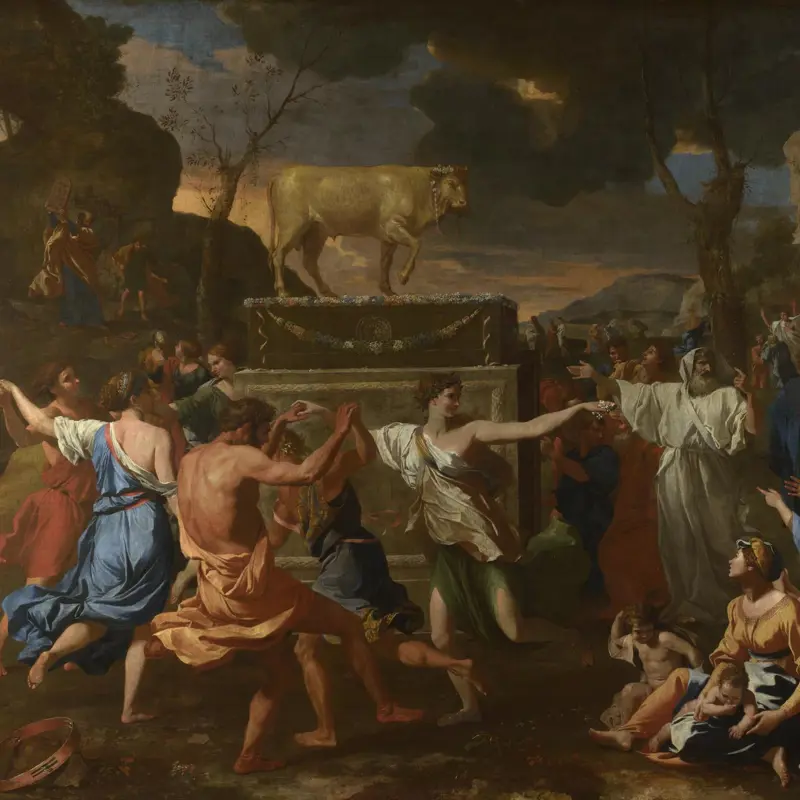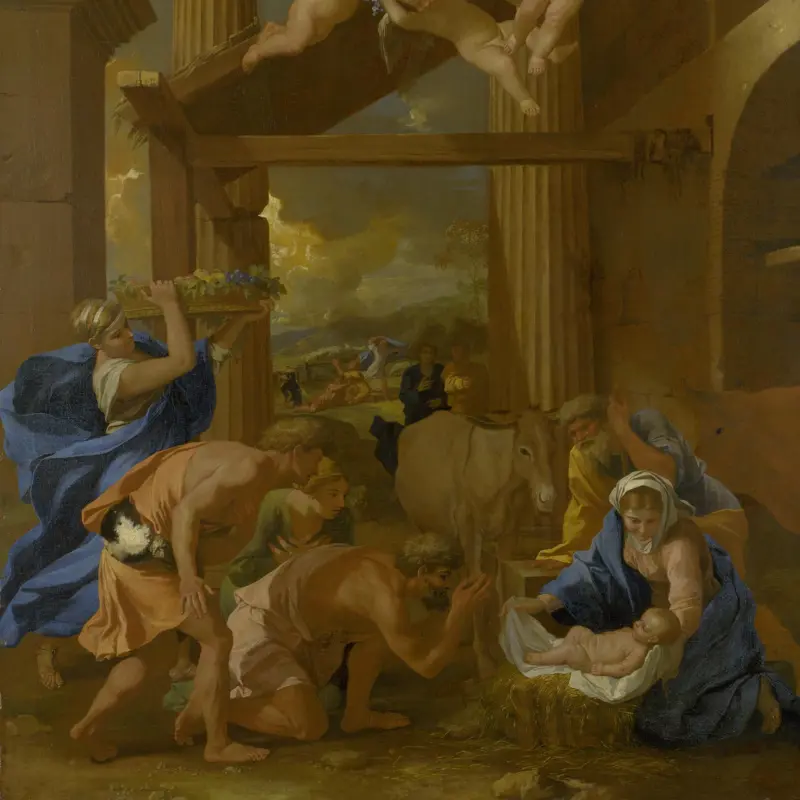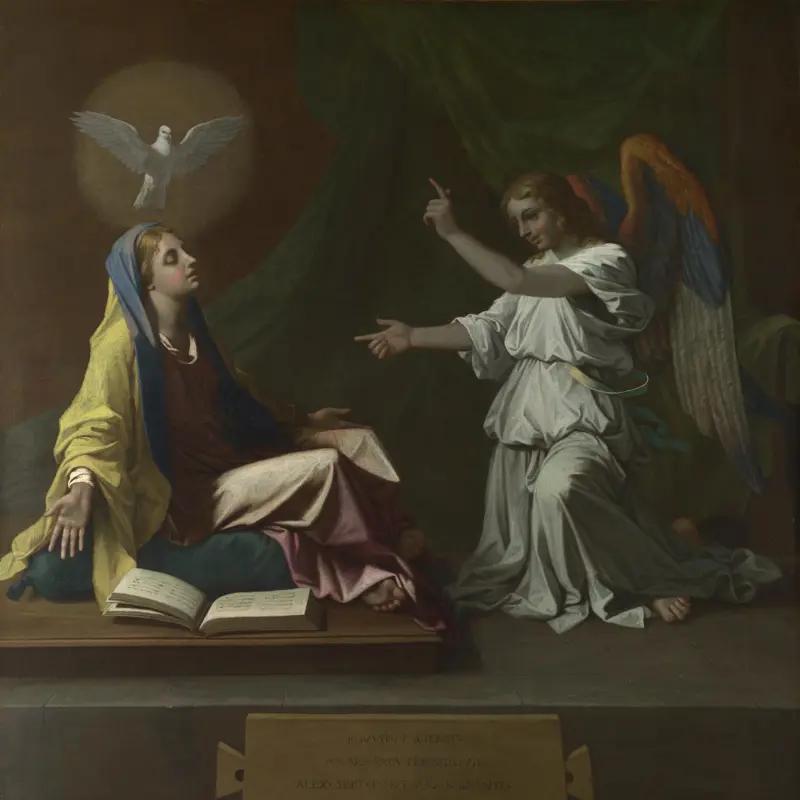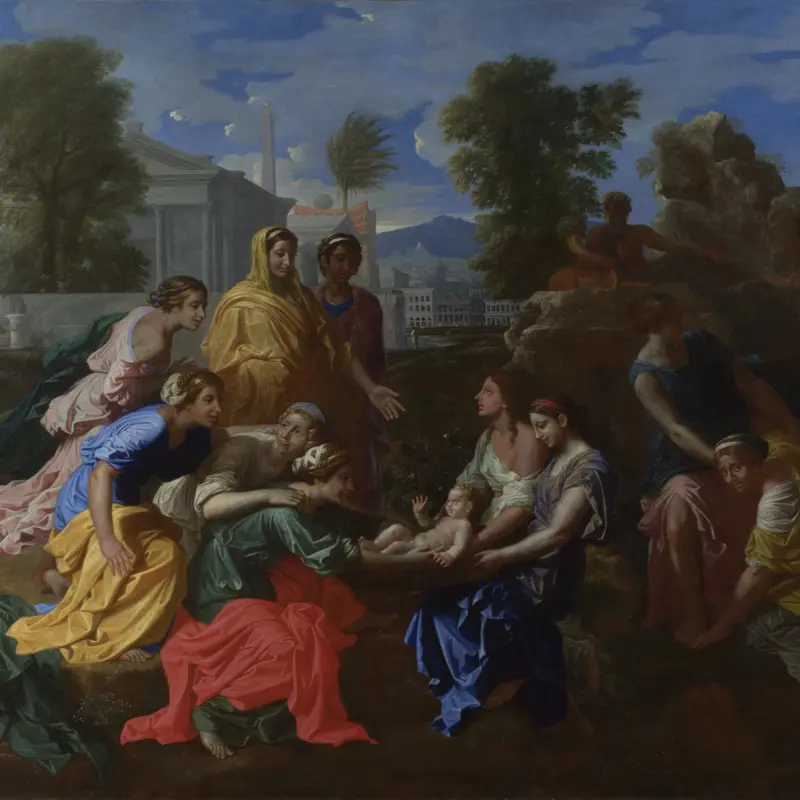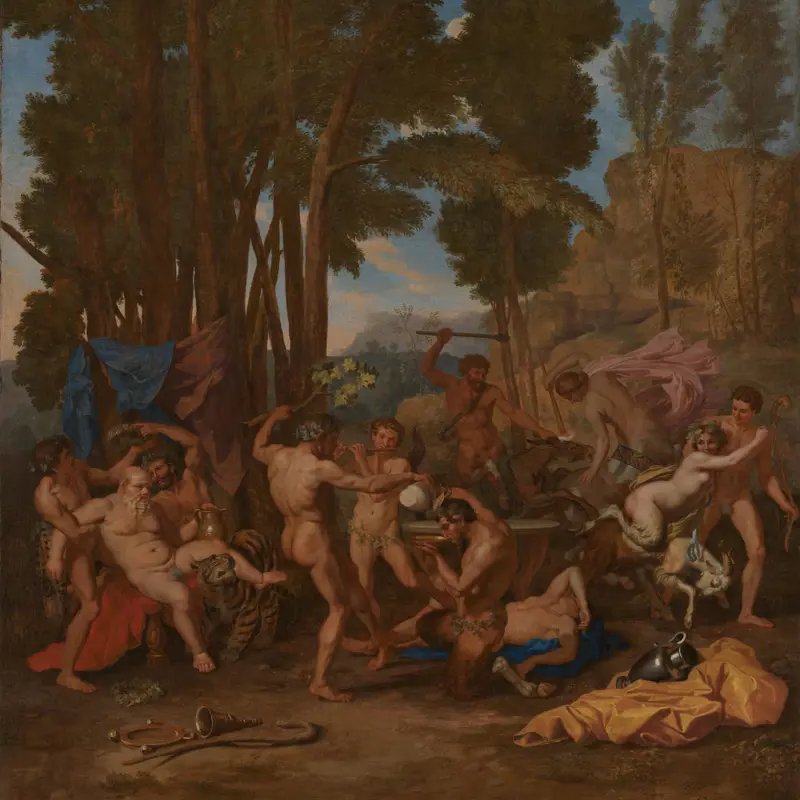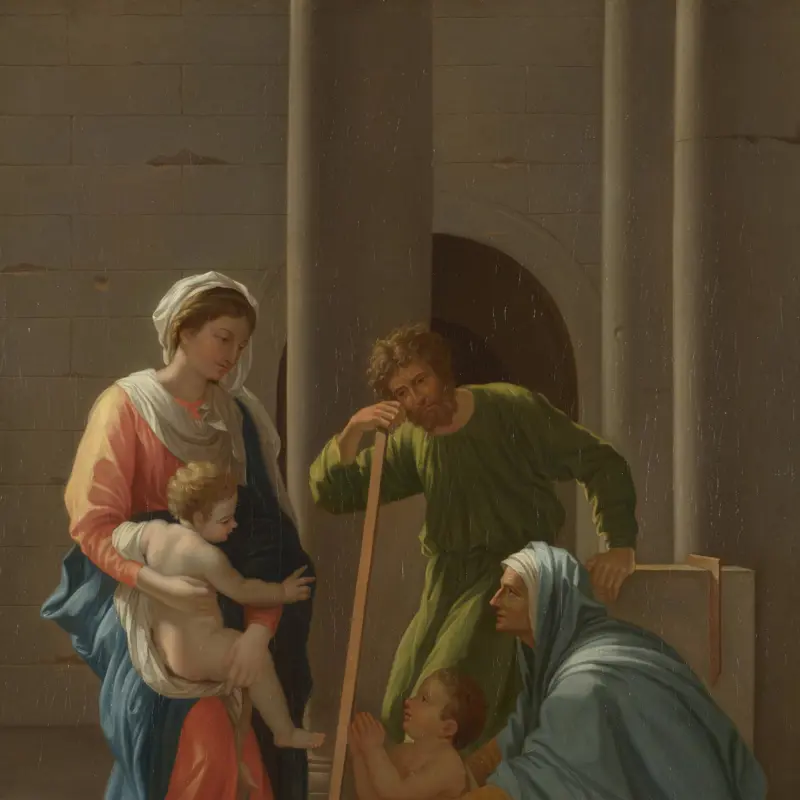Nicolas Poussin, 'The Nurture of Bacchus', about 1628
About the work
Overview
The infant Bacchus, god of wine, drinks from a bowl into which a satyr squeezes grape juice representing wine. Paintings commonly show Bacchus as a drunken adult, but to show him drinking alcohol at this young age is unusual. Ovid’s Metamorphoses describes how Bacchus' aunt Ino watches over him. She is probably the seated woman in blue; her husband, Athamas, is the man holding Bacchus. The two embracing infants are their sons. The story has a tragic outcome when the jealous goddess Juno sends Ino and Athamus insane and Athamus kills one of their sons. Poussin may be alluding to this sad story through the dark clouds in the background and the goat, since goats who had eaten grapes were sacrificed.
The muscular poses in this painting show Poussin’s study of classical sculpture. The colourful draperies and subtle foliage shades are inspired by sixteenth-century Venetian paintings.
Key facts
Details
- Full title
- The Nurture of Bacchus
- Artist
- Nicolas Poussin
- Artist dates
- 1594 - 1665
- Date made
- about 1628
- Medium and support
- oil on canvas
- Dimensions
- 80.9 × 97.7 cm
- Acquisition credit
- Bequeathed by G.J. Cholmondeley, 1831; entered the Collection, 1836
- Inventory number
- NG39
- Location
- Room 29
- Collection
- Main Collection
- Previous owners
- Frame
- 17th-century French Frame
Provenance
Additional information
Text extracted from the ‘Provenance’ section of the catalogue entry in Humphrey Wine, ‘National Gallery Catalogues: The Seventeenth Century French Paintings’, London 2001; for further information, see the full catalogue entry.
Exhibition history
-
2023Masterpieces from the National GalleryShanghai Art Museum East17 January 2023 - 7 May 2023National Museum of Korea2 June 2023 - 9 October 2023Hong Kong Palace Museum22 November 2023 - 11 April 2024Chimei Museum2 May 2024 - 1 September 2024
Bibliography
-
1752A.-J. Dézallier d'Argenville, Voyage pittoresque de Paris, 2nd edn, Paris 1752
-
1813J. Feltham, The Picture of London, London 1813
-
1816R. Smirke, A Catalogue Raisonné of the Pictures Now Exhibiting in Pall Mall, London 1816
-
1829
J. Smith, A Catalogue Raisonné of the Works of the Most Eminent Dutch, Flemish, and French Painters: In Which is Included a Short Biographical Notice of the Artists, with a Copious Description of Their Principal Pictures […], 9 vols, London 1829-1842
-
1838G.F. Waagen, Works of Art and Artists in England, trans. H. Lloyd, vol. 2, London 1838
-
1853J.V. Cousin, 'De divers tableaux du Poussin qui sont en Angleterre et particulièment de "L'Inspiration du poète"', Archives de l'Art Français, 1853
-
1858P.-J. Mariette, Les arts et les artistes, Paris 1858
-
1859P. Mariette, 'Abecedario', Archives de l'art Français, IV, 1859
-
1872M.C. Blanc, Le trésor de la curiosité: Tiré des catalogues de vente de tableaux, dessins…, Paris 1872
-
1914E. Magne, Nicolas Poussin, premier peintre du roi, 1594-1665, Brussels 1914
-
1946Martin Davies, National Gallery Catalogues: French School, London 1946
-
1947P. Hendy, An Exhibition of Cleaned Pictures of 1947: (1936-1947), London 1947
-
1948A. Blunt, 'Poussin Studies III: The Poussins at Dulwich', The Burlington Magazine, XC/538, 1948, pp. 7f
-
1957Martin Davies, National Gallery Catalogues: French School, 2nd edn (revised), London 1957
-
1960M. Hours, 'Nicolas Poussin: Étude radiographique au Laboratoire du Musée du Louvre', Bulletin du Laboratoire du Musée du Louvre, 1960, pp. 3-39
-
1960D. Mahon, 'Poussin's Early Development: An Alternative Hypothesis', The Burlington Magazine, CII/688, 1960, pp. 288-306
-
1966A. Blunt, The Paintings of Nicolas Poussin: A Critical Catalogue, London 1966
-
1969K. Badt, Die Kunst des Nicolas Poussin, Cologne 1969
-
1974J. Thuillier, L'opera completa di Poussin, Milan 1974
-
1978E. Schleier, Nicolas Poussin (exh. cat. Académie de France, Villa Medici, 15 November 1977 - 8 January 1978; Städtische Kunsthalle Düsseldorf, 27 January - 12 March 1978), Rome 1978
-
1980D. Wild, Nicolas Poussin: Band I, Leben, Werk, Exkurse, Band II, Katalog der Werke, Zürich 1980
-
1984C. Mignot, 'Le cabinet de Jean-Baptiste de Bretagne, un "curieux" parisien oublié (1650)', Archives de l'art Français, XXVI, 1984, pp. 71-87
-
1985S. Laveissière, Le Classicisme Francais: Masterpieces of Seventeenth Century Painting (exh. cat. The National Gallery Ireland, 30 April - 9 June 1985), Dublin 1985
-
1987R. Verdi, Nicolas Poussin: Venus and Mercury (exh. cat. Dulwich Picture Gallery, 15 October 1986 - 18 January 1987), London 1987
-
1988K. Oberhuber, Poussin: The Early Years in Rome: The Origins of French Classicism, Oxford 1988
-
1992H. Wine and O. Koester, Fransk Guldalder: Poussin and Claude and French Painting of the Seventeenth Century, (exh. cat. Statens Museum for Kunst, 29 February - 3 May 1992), Copenhagen 1992
-
1994Autour de quelques Poussin retrouvé, Paris 1994
-
1994P. Rosenberg, Nicolas Poussin, 1594-1665: Catalogue raisonné des dessins, Milan 1994
-
1994S. Hyde and K. Scott, Prints (Re)presenting Poussin, (exh. cat. The Courtauld Gallery, 1994), London 1994
-
1994P. Rosenberg, L.-A. Prat and V. Damian, Nicolas Poussin: La collection du Musée Condé à Chantilly (exh. cat. Musée Condé, Château de Chantilly, 27 September 1994 - 6 January 1995), Paris 1994
-
1995D. Mahon, Early Poussin Reconsidered, London 1995
-
1996T. Standring, 'Poussin's "Infancy of Bacchus" Once Owned by Sir Joshua Reynolds: A New Addition to the Corpus of His Early Roman Pictures', Artibus et historiae, XVII/34, 1996, pp. 53-68
-
1996R. White and J. Pilc, 'Analyses of Paint Media', National Gallery Technical Bulletin, XVII, 1996, pp. 91-103
-
1996F. Peretti and T. Standring, France in the Golden Age: Seventeenth-Century French Paintings, (exh. cat. Walpole Gallery, 26 June - 31 July 1996), London 1996
-
1998Palazzo delle esposizioni, Nicolas Poussin: I primi anni romani (exh. cat. Palazzo delle Esposizioni (Rome), 26 November 1998 - 1 March 1999), Milan 1998
-
1999J. Lane, '"The Dark Knight": Edward Knight of Wolverley and His Collections', Apollo, CXLIX/448, 1999, pp. 25-30
-
2000R. Kendall, Drawn to Painting: Leon Kossoff Drawings and Prints After Nicolas Poussin, London 2000
-
2001
C. Baker and T. Henry, The National Gallery: Complete Illustrated Catalogue, London 2001
-
2001H. Wine, National Gallery Catalogues: The Seventeenth Century French Paintings, London 2001
-
2001Mélanges en hommage à Pierre Rosenberg: Peintures et dessins en France et en Italie XVIIe-XVIIIe siècles, Paris 2001
About this record
If you know more about this work or have spotted an error, please contact us. Please note that exhibition histories are listed from 2009 onwards. Bibliographies may not be complete; more comprehensive information is available in the National Gallery Library.

